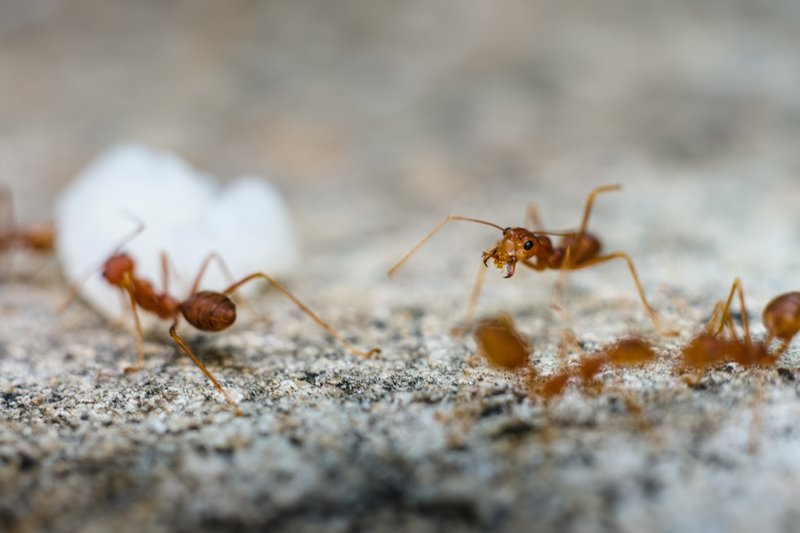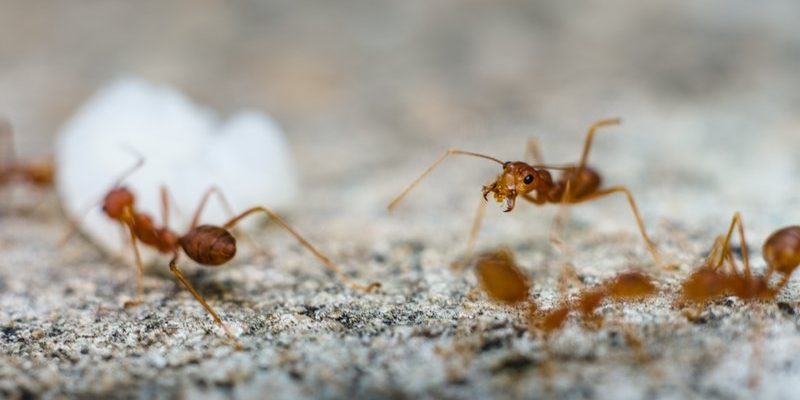
Imagine sitting outside on a warm day, keen to explore the buzzing world around you. You spot a few ants scurrying about, and suddenly you’re thrown into the intriguing world of entomology. Today, we’re diving into the wild world of fire ants and comparing them to other similar insects, like carpenter ants and red imported fire ants. By the end, you’ll be able to spot the differences and appreciate their unique roles in nature.
What Are Fire Ants?
Fire ants, particularly the red imported fire ant (*Solenopsis invicta*), are notorious for their aggressive behavior and painful stings. Originating from South America, they made their way to the United States in the 1930s. These tiny warriors are often recognized by their reddish-brown color and the characteristic way they swarm when their nest is disturbed.
The fire ant’s sting is no joke. It feels like a sharp pinprick and can lead to itchy welts that linger for days. For some people, the sting can even trigger allergic reactions. Here’s the thing: they see their nest as a fortress. If you accidentally get too close, you might find yourself on the receiving end of a swarm, as they are quick to defend their home.
Fire ants are social creatures, living in colonies that can range from a few hundred to several thousand ants. They work together, gathering food, nurturing their young, and expanding their nest. This level of organization is impressive, and it keeps their community thriving.
Fire Ants vs. Carpenter Ants
Now, let’s take a look at carpenter ants. You might be wondering how they stack up against fire ants. Carpenter ants (*Camponotus* spp.) are larger, usually black or bicolored, and they don’t sting. Instead of building mounds like fire ants, carpenter ants prefer to create their nests in wood, often causing damage to homes and structures.
One of the biggest differences is their diet. Fire ants are omnivorous and will eat just about anything, from sugary substances to insects. Carpenter ants, however, prefer sugary solutions and protein sources, which they gather from other insects. Their role in the ecosystem leans more toward being recyclers, breaking down decaying wood.
Despite their differences, both ants are social and form colonies. However, carpenter ants are known for their less aggressive nature compared to fire ants. If you disturb a carpenter ant nest, you might not get swarmed. Instead, they’ll usually scurry away to protect their queen and brood.
Fire Ants vs. Red Imported Fire Ants
You might be surprised to learn that the term “fire ant” covers more than just one species. The red imported fire ant is the most notorious, but there are also native fire ants, like the southern fire ant (*Solenopsis xyloni*). They share similar characteristics, but it’s essential to note their differences.
The red imported fire ant is more aggressive and adaptable than its native cousin. This adaptability has allowed the red imported fire ant to spread rapidly in various environments, particularly in the southeastern United States. Native fire ants, on the other hand, might not be as aggressive in defending their territory.
Both types of fire ants display that characteristic painful sting, but the red imported fire ant’s sting tends to be more intense. While they might look similar at first glance, a closer inspection reveals variations in their behavior and habitat preferences, which can help you identify them in the wild.
How to Identify Fire Ants
Identifying fire ants is crucial, especially if you want to avoid their painful sting. Here are a few key traits to help you determine if you’re looking at a fire ant:
- Color: Fire ants are typically reddish-brown. This coloring can help distinguish them from other similar ants.
- Size: They usually measure between 1/8 to 1/4 inch long, making them relatively small.
- Body Shape: Fire ants have a segmented body with a petiole (the narrow waist) that has no spines.
- Behavior: If you disturb their nest, watch for aggressive behavior. They will swarm and bite to defend their colony.
By keeping these features in mind, you can develop a sharper eye for spotting fire ants in your garden or yard. Remember, their nests often appear as loose soil mounds, which can easily be mistaken for other anthills.
The Environmental Impact of Fire Ants
So, why does it matter if we can identify fire ants? Understanding their impact on the environment is pivotal, especially considering their invasiveness. Fire ants can disrupt local ecosystems by preying on native species and competing for food resources. This creates imbalances, making life tough for local wildlife, like birds and other insects.
Interestingly, fire ants can have beneficial effects, too. They help in soil aeration through their tunneling activities and can control agricultural pests. Farmers sometimes see fire ants as a double-edged sword; they can aid in pest management but also target beneficial insects.
It’s essential to recognize both sides of the fire ant narrative. Their role in ecosystems is complex, and understanding it can lead to better management practices—especially in areas where they’ve become invasive.
Dealing with Fire Ants: Best Practices
If you find yourself facing a fire ant problem, you’re not alone! Many homeowners deal with these pests, but there are ways to manage them effectively:
1. **Identify the Nest:** Finding the nest is key. Look for the characteristic mounds in your yard.
2. **Use Baits:** Fire ant baits can be effective in controlling their populations. These baits attract the ants, allowing them to take the poison back to the nest, which helps eliminate the colony.
3. **Physical Removal:** If you want a more immediate solution, you can pour boiling water over the mound. While this won’t eliminate the entire colony, it can reduce their numbers.
4. **Preventative Measures:** Keep your yard clean. Regularly remove food sources like pet food, fallen fruit, or garbage, which can attract ants.
With these tips, you’ll be equipped to tackle a fire ant problem head-on. Keeping an eye on their behavior and nest locations can help prevent future issues, too.
Fire ants are undeniably fascinating. They’re small but mighty, playing a significant role in their ecosystems. By comparing them to similar insects, like carpenter ants and the native fire ant, we see how diverse the ant family can be. While fire ants can be a nuisance and even a danger to some, they also contribute uniquely to their environments.
Next time you’re outside and see ants marching by, take a closer look. Are they fire ants or one of their similar cousins? Either way, you’ll have a better appreciation for the hardworking ant world and its complex interspecies relationships. By understanding fire ants and their behaviors, you can engage with your environment more mindfully, whether you’re gardening or just enjoying the outdoors.

